

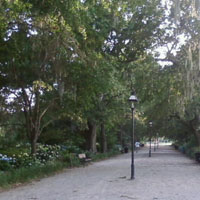
The Charleston Parks Conservancy (website) was created in 2007, fulfilling the vision of South Carolina philanthropist Darla Moore’s desire to “connect people to their green spaces.” IfYouWereMayor.com sat down recently with Harry Lesesne, Executive Director of the Conservancy to talk about the organization, how it works, how it relates to the City of Charleston’s Parks Department, and the importance of parks in cities.
Harry, can you tell us a bit more about the Charleston Parks Conservancy and its mission?
Our mission is simple and direct. We work to increase the quality, awareness, appreciation, and usage of Charleston’s parks and green spaces. Our work includes renovations, a portion of park maintenance, and programming, such our annual Teddy Bear Picnic and community gardens. At the core we want to help stakeholders and residents keep their neighborhood parks in good shape. To that end you can initiate a project yourself or with your neighborhood. We also take on projects at the request of the City of Charleston.
As a little background, our work began as a partnership with the City of Charleston when public resources are stretched. The model for our organization is the Central Park Conservancy in New York City. It was established in 1980 at a time when New York’s resources were literally at a breaking point and Central Park suffered from decline, neglect, and represented public fear. The Central Park Conservancy incrementally built trust, and solidified its reputation and capabilities through a series of renovations, restorations, and programming.
The Charleston Parks Conservancy similarly began with simple strategies. Some of our earliest efforts were developing a new park signage system, and collaborating with the City, the Charleston Horticulture Society, and the Windermere Community to develop the Windermere Boulevard Community Garden.
At the same time, we began work on a conceptual master plan for the renovation of Charleston’s landmark Colonial Lake, working closely with the City of Charleston and the surrounding neighborhoods and community. The Colonial Lake renovation is our largest effort to date. We broke ground earlier this year and I’m sure everyone is looking forward to its re-opening early in 2016.
We are excited about the renovations coming up at Hampton Park which were announced earlier this week. (See the Parks Conservancy Hampton Park page here). The work includes renovations to the former police stables and superintendent’s cottage as community facilities, and the re-opening of the Hampton Park café. We also plan improvements to the entrance of the park from Rutledge Avenue, and shifting the current playground away from the intersection of the park’s roads.
We are also very excited about a new collaboration. We are working closely with the local arts organization Redux Contemporary Art Center (here) to launch a series of temporary site specific installations in public parks in 2016. Stacy Huggins, the organization’s executive director, is very excited about the possibilities for art that, by virtue of being outdoors, has “no barriers to entry.” Look for more details on this in the coming months.
This is all very big news and suggests that The Charleston Parks Conservancy and its battery of volunteer Park Angels are really making a difference throughout the city. Now, you get the inevitable question: What would you do “if you were Mayor?”
My dream project would probably focus on providing even more public access to Charleston’s waterfront. Both the new Northridge Park and the Higgins Pier at the end of the West Ashley Bikeway are excellent waterfront opportunities for West Ashley residents. Renovation of Brittlebank Park to include paddling opportunities would be fantastic. In my ideal world, the city of Charleston would be connected by its public green spaces and parks.
Thank you so much, Harry. We look forward to seeing Charleston’s park life come alive in the coming years through the efforts of many led by the Charleston Parks Conservancy!
More information on park conservancies can be found at the Trust for Public Land which has recently published a report entitled Public Spaces/Private Money: The Triumphs and Pitfalls of Urban Park Conservancies (found here)
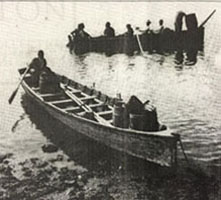
Recently, IfYouWereMayor.com had the opportunity to meet with a small group of residents from Charleston’s Wagner Terrace neighborhood. They were gathered for an introduction to the “Mosquito Fleet,” the elite group of African-American fisherman who supplied most of Charleston’s downtown area with seasonal catch for more than 100 years.
During the mid-twentieth century, the Ports Authority built a passenger terminal that closed off their boat basin, sending the remnants of the fishing fleet to a small waterfront parcel at the foot of Laurens Street where, unfortunately, their livelihood of the past would slowly erode to little more than a pasttime. As development occurred in the area, fewer of the surviving fleet members would spend time on the waterfront. Eventually the Ports Authority fenced off the parcel and cut off access to any of the remaining descendants of this noble group.
In the early 1990s, a small handful of local adults, including Rob Dunlap, Edwin Gardner, and Rose Mitchell, decided that a diverse group of 5th-8th grade children – half coming from the private school Porter-Gaud and half coming from a predominantly black downtown middle school – could benefit from the unique experience afforded by boatbuilding. They figured that the hands-on activity would make every child equal as novices, regardless of their background, and that the African-American children in the group could re-connect to the water that had so defined the region’s history. With the generous support of Detyens Shipyard, the group spent almost 2 years building two beefy 34’ long rowing “gigs” that had similarities to some of the vessels used by the original Mosquito Fleet. The New Charleston Mosquito Fleet was born.
Many in the Wagner Terrace group had never heard of the “Mosquito Fleet” and were astonished to learn about the rich history of these “watermen.” One member of the group, a school teacher, had shared this story with her students. She noted that the children were totally surprised to learn of this legacy. Everyone was excited to learn of the newly formed Lowcountry Maritime Society and how its boatbuilding project in several of the local schools was a continuation of the New Charleston Mosquito Fleet. You can check out their boatbuilding programs here.
How much of the area’s richness and artistry can be traced to the skills and artistry of slaves and free blacks? The sweetgrass basket (here and here) is relatively well known, and the area’s jazz legacy continues through the efforts of such groups as Jazz Artists of Charleston (here). It has long been known that may of the area’s food traditions have roots in Africa. The recent Nat Fuller dinner underscored the legacy of African-American (and immigrant) chefs and this article from Charleston Magazine highlights others from this rich, storied tradition.
Virtually every historic home in the city owes its craftsmanship to black masons, painters, and carpenters. The distinctive ironwork of Charleston is highlighted through the work of the renowned blacksmith Philip Simmons and the foundation that continues his legacy (here). The American College of the Building Arts (here) is dedicated to continuing the artistry of the building trades in Charleston and throughout the world. While its staff and students are largely white, one hopes that connections to the African-American craftsmen are not lost as this Charleston-based institution continues to grow.
What can this mean to us today? A recent article in The Guardian newspaper, entitled “What Will Happen When Harlem Becomes White?” (here), speculates about the impact of gentrification on black culture and history. Black residents in Harlem are of two minds: “At the heart of Harlem’s gentrification are black residents old and new, many of whom are thankful for the new amenities and nighttime options. A very particular brand of black pride is being curated, sold and embraced – a move that is at the same time celebrating and threatening the very core of a dynamic black heritage and culture.”
It is important for all of Charlestonians to understand and appreciate the extent to which black culture has created the authentic culture of the city. Everyone must realize that Charleston’s real culture is not just a set of bankable commodities, but represents a unique set of vital relationships and connections that should be continued and cultivated. Community life among blacks has often been outside the home, existing in gatherings at parks, churches, and on front stoops and porches. In New York the crackdown on casual outdoor gatherings during the 1990s eroded a key element of the informal black community life and the result may contribute to some of the tensions that exist between police and these communities of color.
With the advent of gentrification in Charleston will it be possible to foster relationships that can preserve the black community as a facet of the city’s vitality? An authentic future for Charleston really depends on it.
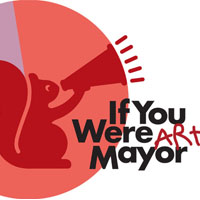
At IfYouWereMayor.com we are curious how cities throughout the world work to create and cultivate livability for all residents, and how these strategies might translate to the cities where we live. Our own research suggests the right balance rests in five basic tenets: transportation, education, economic opportunities, housing & neighborhoods, and arts & culture. In Charleston, South Carolina, Arts & Culture often vies for attention with other issues, like the need for a spectrum of transportation choices and better education opportunities ranging from pre-school to re-training of older workers.
ArtPlace America, a ten-year collaboration among large foundations, federal agencies, and financial institutions, is intent upon positioning “arts and culture as a core section of comprehensive community planning and development in order to help strengthen the social, physical, and economic fabric of communities.” Inspired by Jane Jacobs, author of the seminal 1961 book The Death and Life of Great American Cities, the organization wants to see locally informed, human centric, and holistic community development. This is precisely the aim of ArtUP: The Enough Pie Prize – a competition for grants, up to $1000 each, to realize up to 2 ideas for arts and culture in Charleston Upper Peninsula (UP). More information on how to enter is available here.
ArtPlace recently announced the twenty-one finalists for its Community Development Investments program. According to an article in the online magazine Next City (here), six winners will share this year’s grant pool of $18M and benefit from advice on everything from placemaking to finances. Part of the evaluation for the winners will include how well the initiative represents a broad range of stakeholders in a spectrum of sectors. Ultimately, ArtPlace wants to demonstrate the unique value that arts & culture can bring across this entire matrix, including every stakeholder in objectives across all sectors.
The commitments and partnerships of ArtPlace America demonstrate that Arts and Culture is aligned with transportation, housing, education, and economic development to form the nexus of any healthy community. All of these core functions contribute to a community’s overall future and require ongoing community investment. For Charleston, this means that Arts & Culture not only deserve, but must hold a permanent place embedded within the community.
On June 9, the Charleston Regional Arts Alliance, in partnership with IfYouWereMayor.com, will host the Art Matters Mayoral Summit, from 9 am until 11 am at the Woolfe Street Playhouse. Everyone interested in the arts should plan to attend this discussion with the candidates running for Mayor.
The big question probably should be – How do YOU, potential Mayor, intend to assure that arts and culture remain a key sector of Charleston’s future?
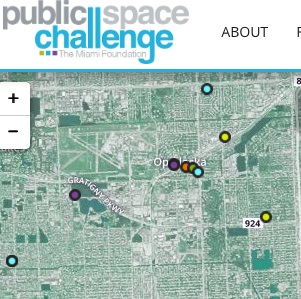
IfYouWereMayor.com is very keen to know how creative Charlestonians can be, since our research has found that Arts & Culture is one of the top five categories that make a city livable. As we countdown to the Art Matters Mayoral Forum, organized by the Charleston Regional Arts Alliance, (and scheduled for June 9th at the Woolfe Street Playhouse), we thought we would try a few angles to spark your imagination and get you busy posting at IfYouWereMayor.com. We’ve been enlisted as the landing spot for ideas that can be part of that discussion. You certainly wouldn’t want the candidates to take the Arts for granted – Charleston’s Art is one of its greatest assets.
To get those of you with right brain tendencies geared up to actually post some IDEAS, we wanted to share some creative ideas that were part of the Miami Foundation Public Space Challenge (here). The Miami Foundation more than doubled the resource pool, to $305,000, for this year’s challenge – to uncover and realize “the best ideas for creating, improving, and activating parks, plazas, and local gathering places.”
First of all, we found the structure of the challenge interesting, with ideas organized by the kind of enhancement proposed:
•beautification
•child- or senior-focused
•gardens/farmers’ market/healthy eating
•physical activity/exercise
•public comfort (shading, seating, etc.)
•gathering space; safety
•signage/wayfinding
The New Tropic newsletter (link) parsed several themes from the numerous ideas. First of all, people married issues of transportation with improving the shelters provided for bus transit users, including USB charging stations for electronic devices, solar-power integrated into bus shelters, and bus stops that highlight neighborhood features. More performances in public spaces were seen as a plus, with one idea suggesting that performances could be in non-traditional places and highlight the cultural, social, and historical significance of specific locations.
Several ideas focused on the Miami River, its water quality, its potential as a recreation resource (such as a floating pool), and demonstration projects for more awareness of the area’s freshwater resources. Food figures into the equation with several ideas to connect people through food projects and healthy eating. And there was even an idea for mobile/modular parklets that would provide charging stations, sun shades, and seating so a pop-up park where people could meet and mingle in new ways could happen anywhere in the city.
Reading through the feed of ideas, it was easy to imagine “Charleston” substituted for “Miami” in so many instances. The possibilities are almost infinite. What ideas could you “take to the streets” of Charleston? GET INSPIRED!
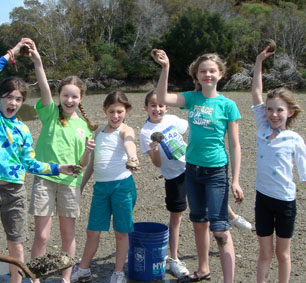
A recent article in the New York Times (you can read it here) covers a rather new development in local governance called Participatory Budgeting. The process, which has found its way into several US and Canadian cities, began in the Brazilian city of Porto Alegre in 1989. The concept has residents determine how to spend portions of public funds allocated for their districts, neighborhoods, or cities. In New York, the selected ideas have reflected the neighborhood demographics, ranging from expansion of a neighborhood’s internet access via rooftop wireless devices to a dog run to a storytelling garden in a neighborhood park.
One of the most interesting aspects of the process is its inclusivity. In New York, children as young as 14 can participate along with undocumented immigrants and formerly incarcerated individuals. Projects and ideas are put forth within the communities. There are campaigns and workshops to promote individual ideas, with the final choices being by ballot. The process has opened up the concept of local stewardship and civic engagement, especially with local government, by some individuals who often feel disenfranchised or unheard.
At our Facebook page several weeks ago we highlighted a 2014 participatory budgeting process in Boston, the city’s first effort in this area, where youth between the ages of 12 and 25 are tasked with determining how an allocation of $1,000,000 capital funds will be spent. The initiative resulted in a series of youth-focused initiatives: makeovers/updates to several parks, playgrounds, and picnic areas, an art wall project for graffiti artists, laptop computers for a group of high schools in underserved neighborhoods, security cameras in a park, and a feasibility study for a skateboard park. The 2015 process – Youth Lead the Change: Participatory Budgeting Boston – is underway now through May. More info on Boston’s program can be found here.
These efforts are introducing civic responsibility to wide ranging groups of individuals who have historically had low turnouts during elections or been ineligible to vote. IfYouWereMayor.com would like to introduce this concept to Charleston. We believe that participation and engagement by everyone can cultivate leadership, responsibility, and stewardship in our city. You can learn more about the process and how it is evolving in the US here.